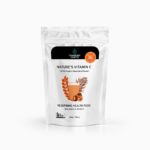I’ve been in the nutrition world far too long to see a new supplement trend on TikTok and become a best seller not to be a little suspicious as to its ability to do all the things claimed.
I also wonder how the demand for this nutrient can be maintained worldwide. Is it an extract, or is it being made using synthetic biology (Crispr technology)? A far more efficient system. And am I prepared to be swept up in the hype?
When it comes to preventative health care, I’m a vitalist not a mechanist. In the case of emergency care, the knowledge of mechanism comes up trump, but when it comes to prevention, maintaining and finding health, the philosophy of vitalism never seems to fail. I know that supplements can be part of both pictures.
There is no one panacea vitamin or nutrient for good health – it takes a lifestyle change. Using organic real food, clean water, connection, sunshine, quality air, sleep and appropriate movement.
Food is my mantra, not supplements – so let’s talk about one of the latest that’s trending.
Glutamine is the most plentiful amino acid (part of a protein chain) in the body. It’s known as a conditional amino acid, which means your body can make it, but it likes to get a supply from the food you consume. Foods that are high in glutamine include beef, eggs, tofu, milk, bone broth, spirulina, chinese cabbage, cottage cheese, asparagus, venison, wild caught fish, turkey, corn and rice, in other words, glutamine is across the animal and plant kingdoms.
Glutamine participates in the formation of purine and pyrimidine nucleotides, amino sugars, glutathione, glutamate and other amino acids as well as protein synthesis, wound healing, glucose production, is an important fuel for the immune system, the brain and gut mucosal cells, and it is at the heart of controlling pH balance in the body. It is unlike other amino acids in that it is not stable in a solution and depends on temperature, pH and holding time for stability.
The supplementation of glutamine has proven to be very effective in burns and wound victims, severely compromised immune systems and healing after major surgery or physical trauma. It’s also been used to alleviate the effects of chemotherapy. Glutamine production by the body is disturbed with alcohol consumption. Once alcohol is out of the system, the body produces glutamine again. Glutamine has also been used to help people with sickle cell anemia since the 1950’s.
It has its place in healing and trauma. No doubt about it, but the question is should we all be taking it daily, and is it the almighty panacea for health?
Glutathione, another trendy nutrient, is made by the body by using glutamine, glycine and cysteine. Glutathione is a powerful antioxidant in the body, it also plays a key role in metabolism of toxins, creation and repair of DNA, production of protein and prostaglandins, activation of enzymes, and is part of immune responses. To make glutathione you must have the three amino acids present along with other enzymes and co-enzymes (glutamine (our topic of conversation), cysteine and glycine). I know there are a lot of ‘g’ words.
If there is a limited amino acid then the production of glutathione will be limited. Let me explain with a passion of mine; Glyphosate (the herbicide used on many food crops) takes the place of glycine in the amino acid chain in plants and animals and if it does this, then glycine could be the limiting amino acid, not glutamine. In other words, you could have as much glutamine as you want but will be limited in making glutathione due to the lack of glycine as a result of modern agricultural chemicals. So what does this mean? We have to look at the big picture, not just one nutrient.
Why all of a sudden do we need more glutamine?
When I did biochemistry through university (and continue to study it today) it fascinated me how innately intelligent our bodies are, that they can run all these biochemical pathways. But without the proper ingredients, it is limited in its ability. For humans to survive to this point in time food and lifestyle is what allowed the innate intelligence of the body to be at its healthiest. But industrial agriculture, proliferation of man-made health disrupting chemicals in every area of our life and food processing, has depleted our foods of good nutrition. So, the answer has been to supplement rather than look at the root cause of the issue in the first place, thereby not needing to take dubiously made and manufactured supplements.
We are playing with fire when we supplement with synthetic nutrients on a daily basis. For example, let’s take what we know about Vitamin C. Ascorbic Acid is the outer shell of the whole food Vitamin C complex. I heard someone describe whole food Vitamin C like a vehicle. The ascorbic acid is the frame, the wheels contain copper and the engine is the enzyme tyrosinase. Tyrosinase initiates the oxidation of the amino acid tyrosine into melanin (skin pigmentation). Whole food vitamin C includes rutin, bioflavonoids, choline, P factor, J factor, K factor and ascorbinogen. Each one of these elements has a part to play in vitamin C being utilized by the body the way it should be. This is why instead of Changing Habits selling ascorbic acid, we sell a whole food Nature’s Vitamin C made from 100% Camu Camu.
The discoverer of Vitamin C, Dr Albert Szent-Georgi, Nobel Prize Laureate said “Ascorbic Acid simply cannot confer vitamin activity”. Vitamin C is not only for immune support and connective tissue but provides the substrate on which we are able to create cellular energy – ATP. Your health depends on a steady flow of this energy unit. Without it death is imminent.
Remember that in nature just like ascorbic acid, glutamine is never found in isolation it is in a whole flood with other amino acids, fats, sugars and phytonutrients which all work symbiotically together to nourish and keep us healthy.
How is the majority of glutamine made for the supplement and medicinal market?
As always, I go to the patents to find out how this is done. Back in the 1950’s before genetic modification of microbes and fermentation, glutamine was made in a chemical laboratory using starters, reagents and solvents, but now it is made using a genetically modified microbe on a sugar medium which could be genetically modified sugar beet. The microbe is coryneform bacterium that has been genetically modified using Crispr technology to enhance its intracellular glutamine synthetase (enzyme) activity to produce copious amounts of l-glutamine for a burgeoning supplement and industrial market. The genetically modified microbe is called Corynebacterium glutamicum.
Corynebacterium glutamicum is an industrial microbe traditionally used for the production of amino acids. It was first discovered in producing glutamate. Now it is used to make amino acids, such as lysine, threonine, isoleucine, as well as vitamins like pantothenate (vitamin B5). So, when you see these supplements, it’s most likely that they are made using synthetic biology (see my article on this here).
Corynebacterium glutamicum holds the potential to be upgraded into one of the most successful industrial microorganisms in the world when the modern disciplines and technologies (synthetic biology, CRISPR genomic editing,) are applied in a combinatorial and advanced fashion.
This is where I have a problem.
When we genetically modify microbes like bacteria, fungi, virus’s and moulds, we are playing with a significant part of nature and if these microbes escape from the laboratories, what are the consequences? We have already seen the consequence of one leak over the past 2 years. I don’t think we really know nor do I believe anyone knows, but in my mind I’m not prepared to support this unknown element of science and genetic engineering.
Glutamine is being touted as the new wonder supplement, but I wonder whether it’s not that we need more glutamine but rather to be more mindful of where we source our food and how we live our lives.
Avoiding lifestyles and foods that ruin the immune system and digestive system – read my book Lab to Table to learn what these are and know how to source foods from ethical sources and tend to the body’s innate immune system by living the principles of a healthy lifestyle. Having this understanding shortcuts the need for these white-powdered synthetic supplements made through dubious means that in the end will not be supportive of your health or the planets.
If you are in a critical condition and this is what you need to survive by all means this is when modern medicine shines, but for your day-to-day nutrition and health, seek out the principles of healthy eating as taught by Changing Habits and The Nutrition Academy.
To make sure I get all my needs for glutamine I do the following;
- Eat foods high in glutamine (see above list).
- Make sure the foods you buy have not been grown using agricultural chemicals that are detrimental to your health, your gut, immune system, and the environment, therefore reducing your need for copious glutamine.
- Try slow cook meats and fermented foods.
- Add gelatin (changing habits) and collagen (wild collagen reds) to your diet
- Add Camu Camu Nature’s Vitamin C to your daily intake of foods
- Treat your body with respect and apply the principles of a healthy lifestyle.
- Reduce alcohol consumption
- Make wild collagen reds protein balls
Supplements become bestsellers because we no longer do what we need to do to be healthy, so we look for the quick fix, but that quick fix is just a bandaid that will eventually fester and get worse. Put the work in now to reap the benefits not only now but in the future and for your future generations.
Cyndi O’Meara
Further reading on CRISPR technology and genetic engineering of Corynebacterium glutamicum to make glutamine.
Abstract https://patents.google.com/patent/US7262035B2/en









0 Comments